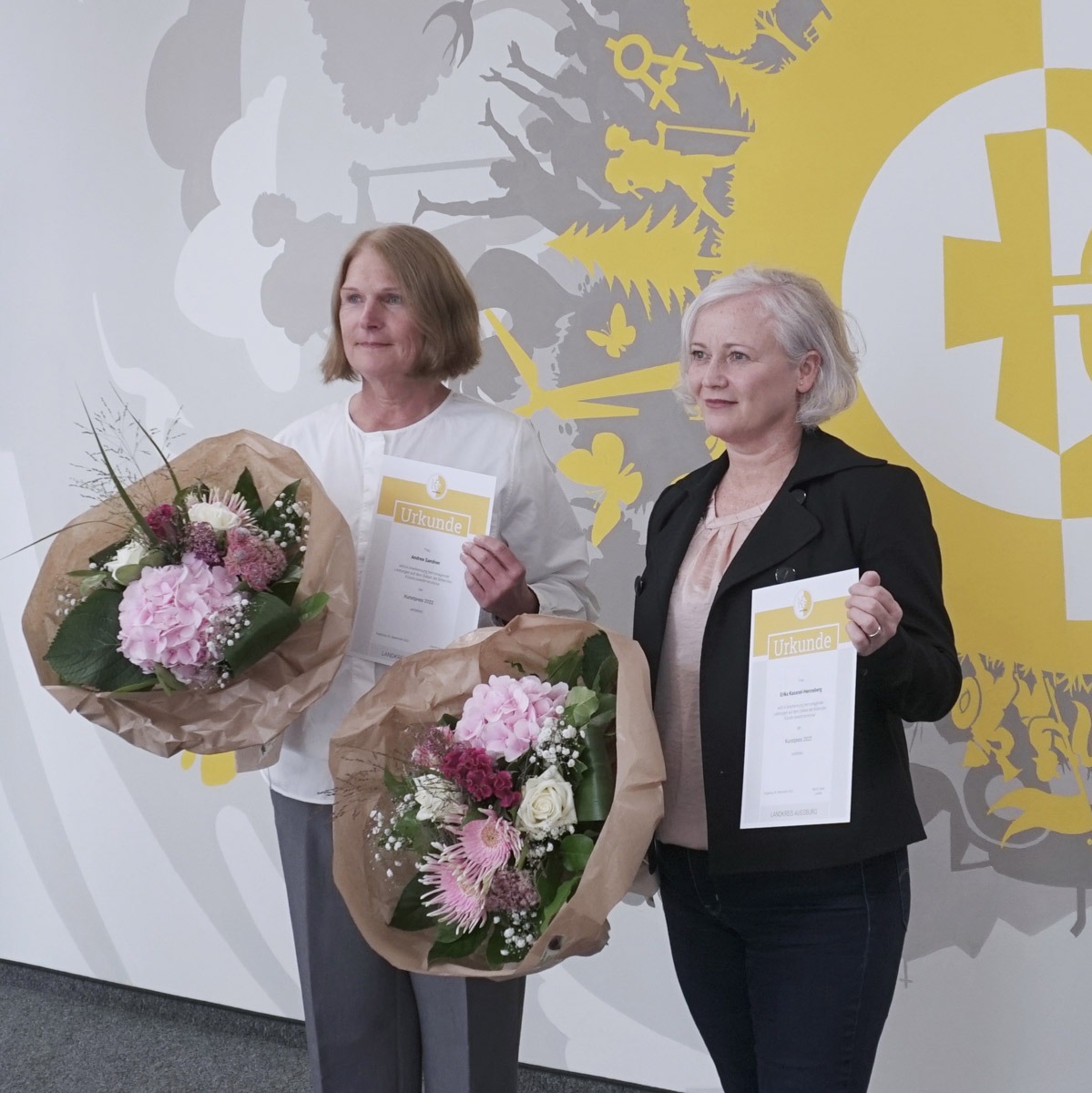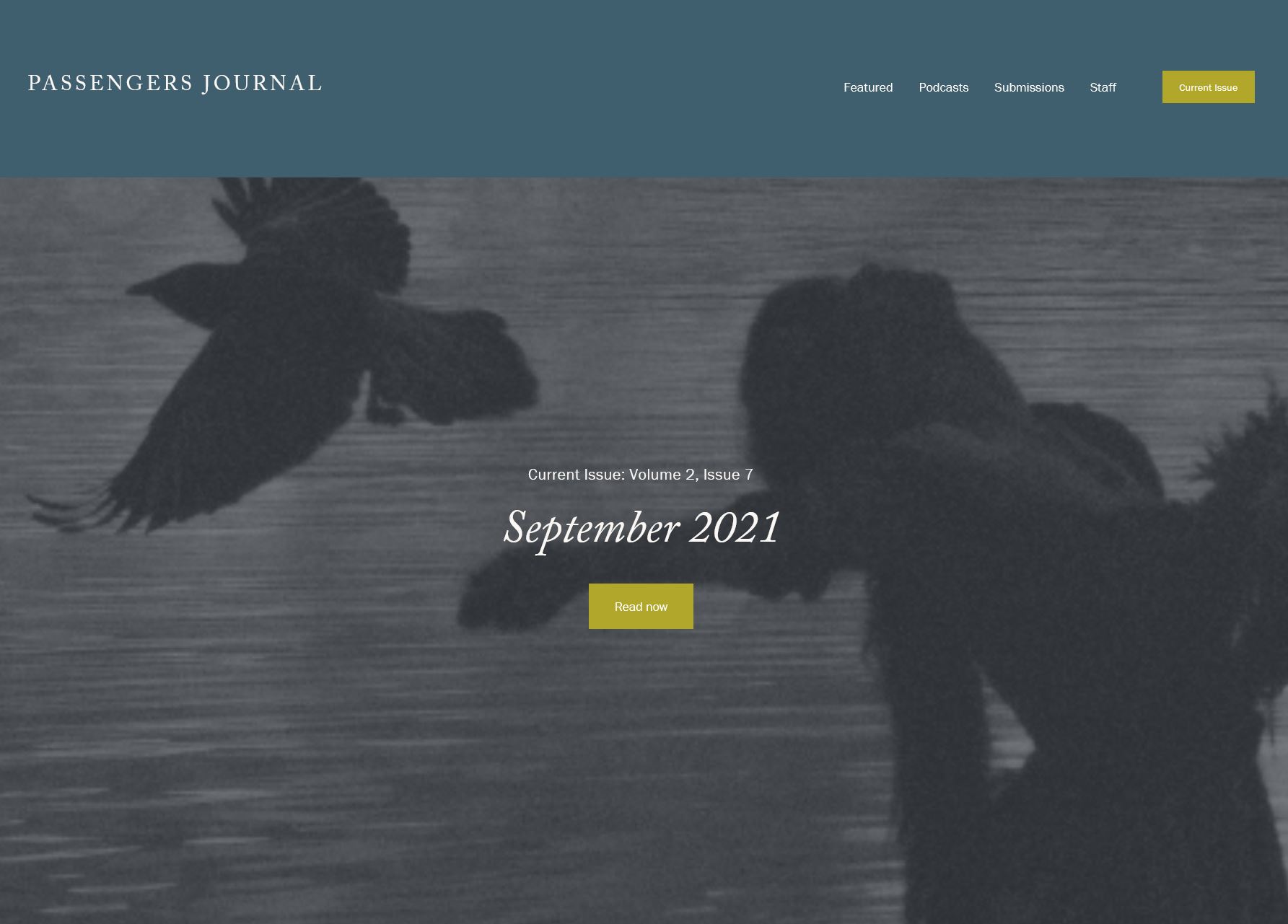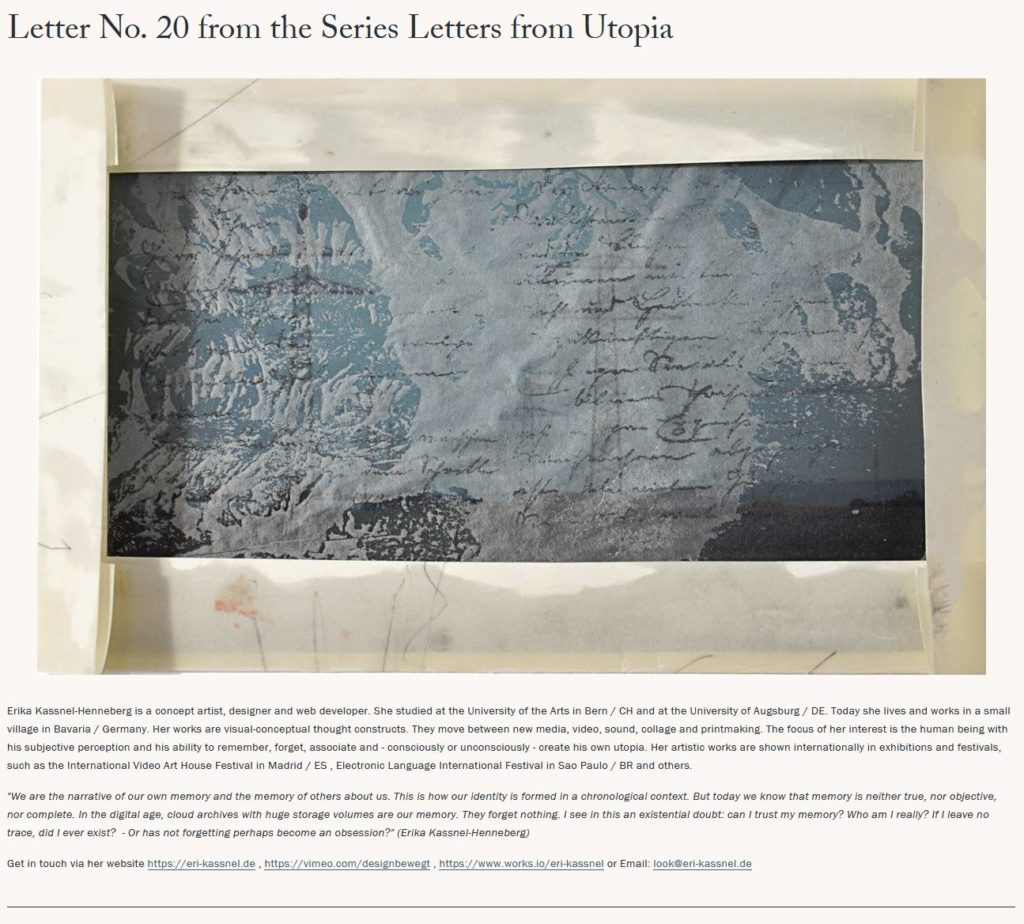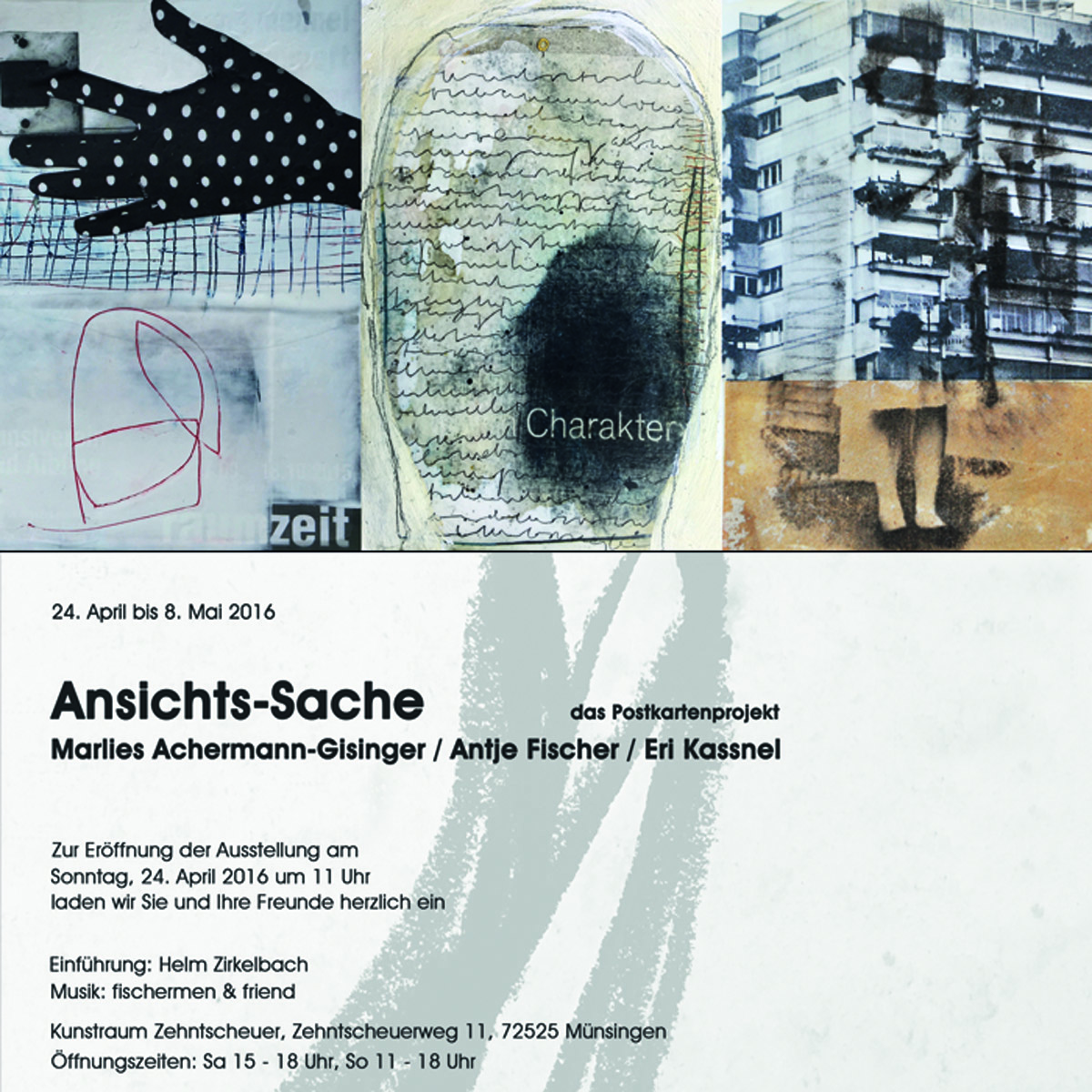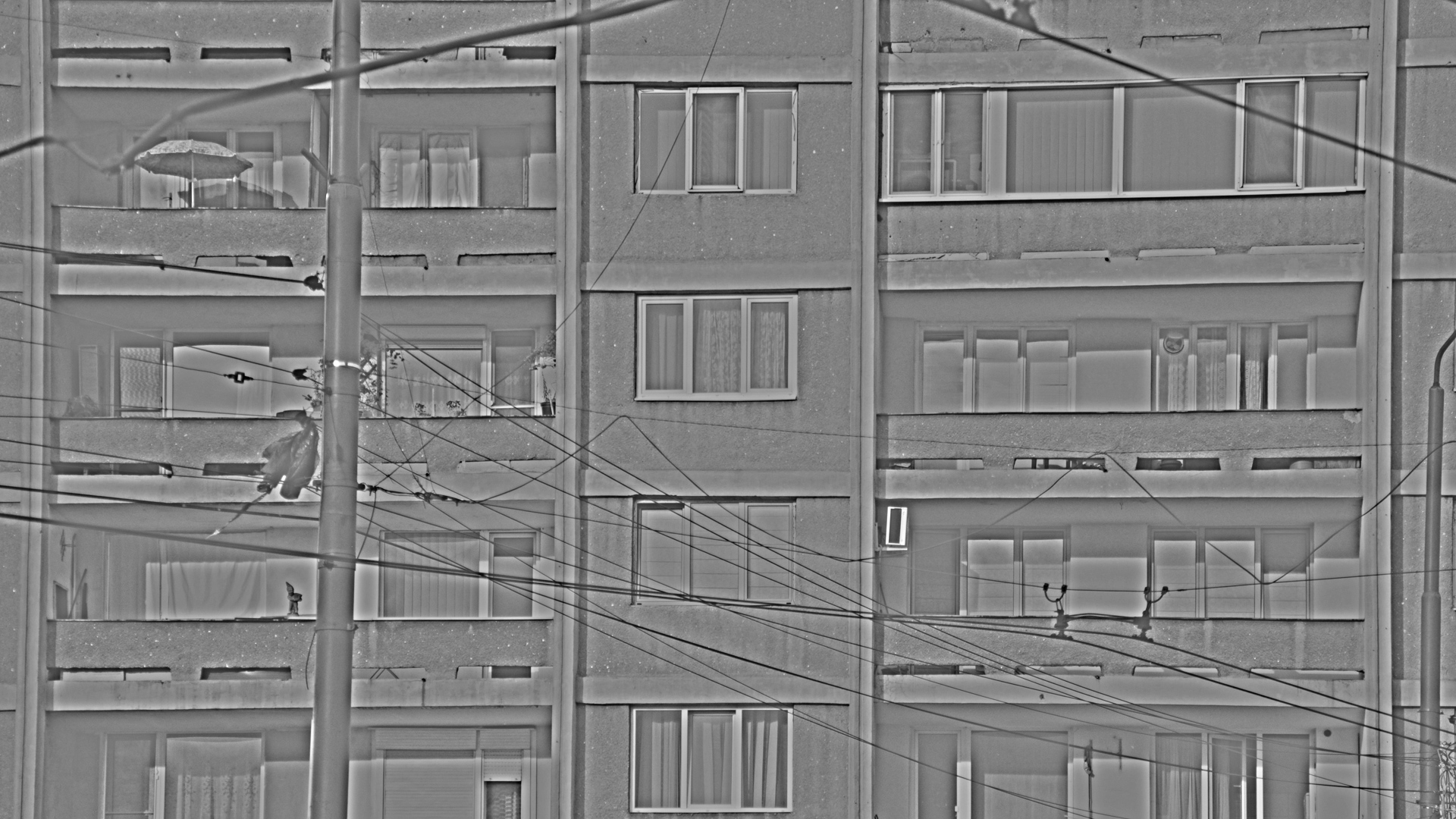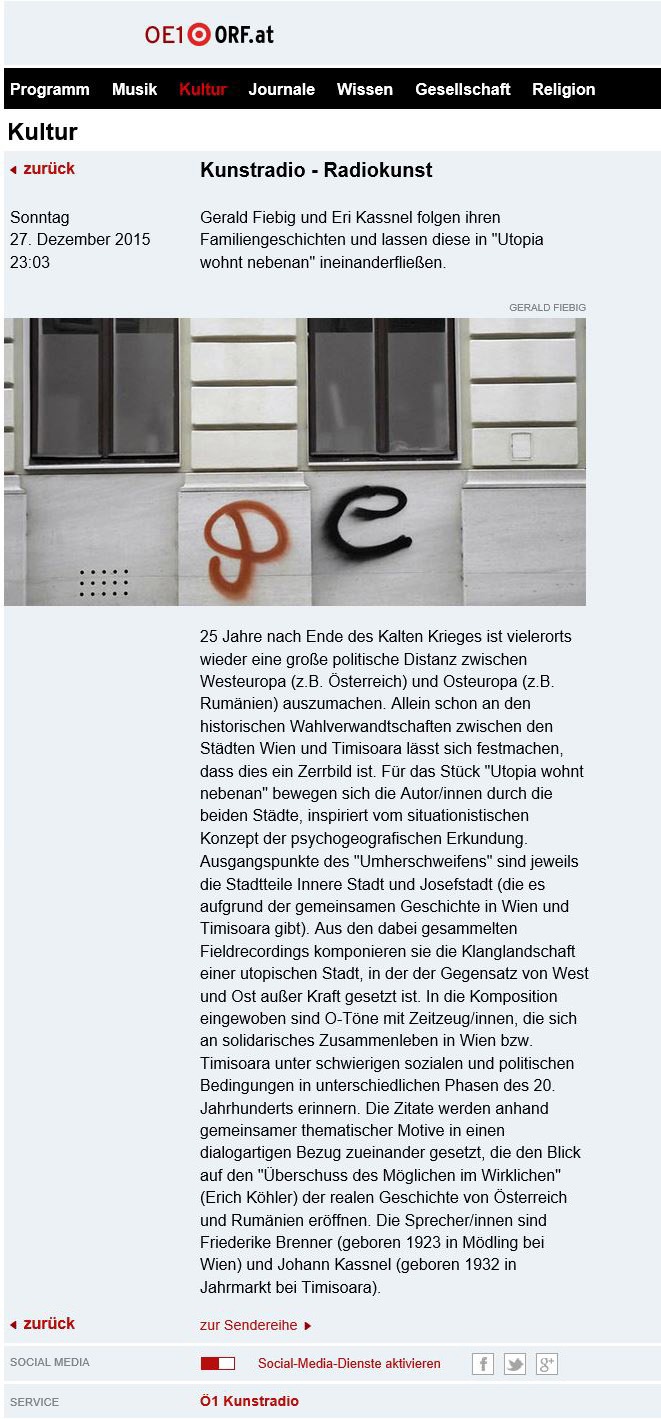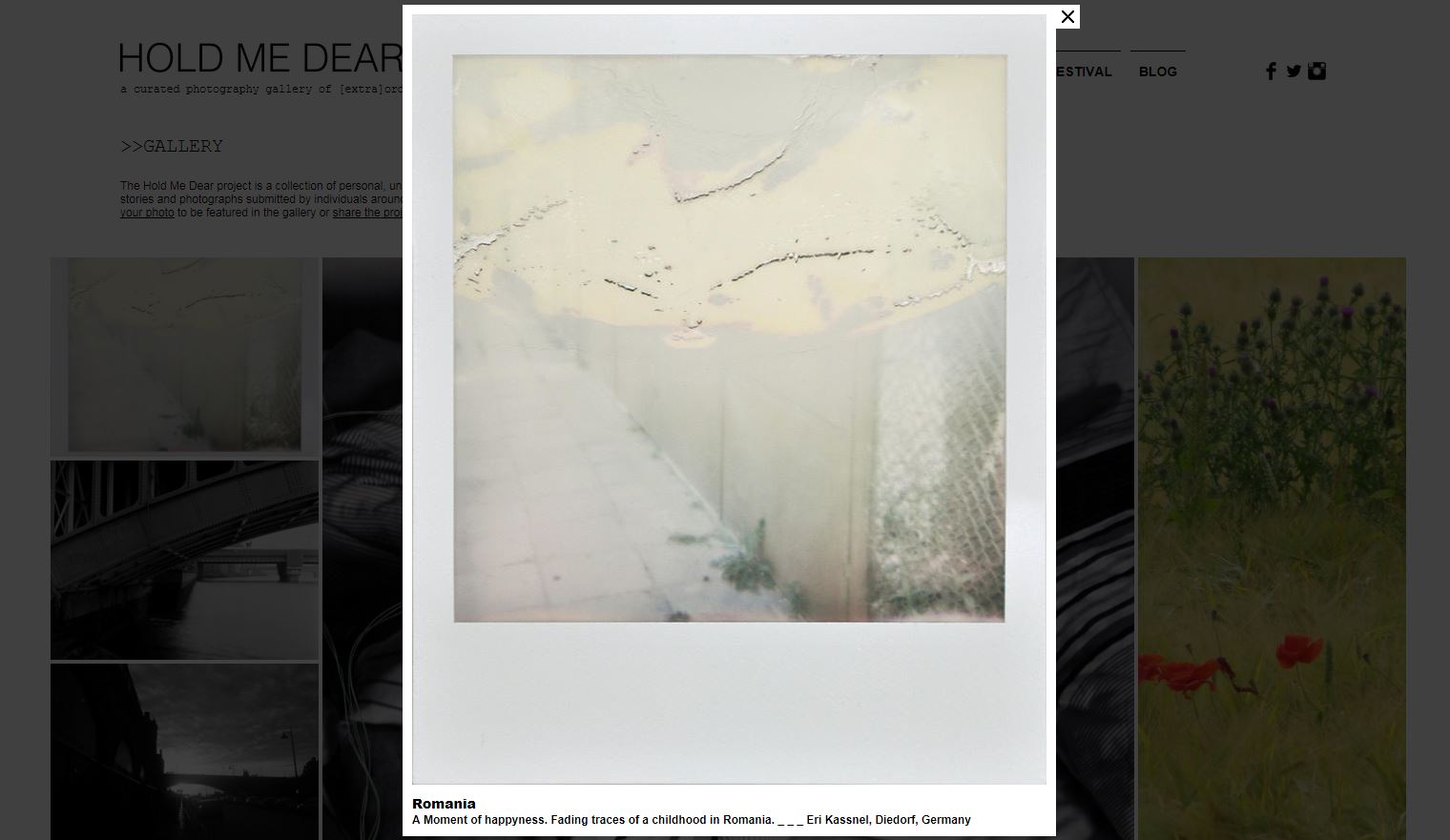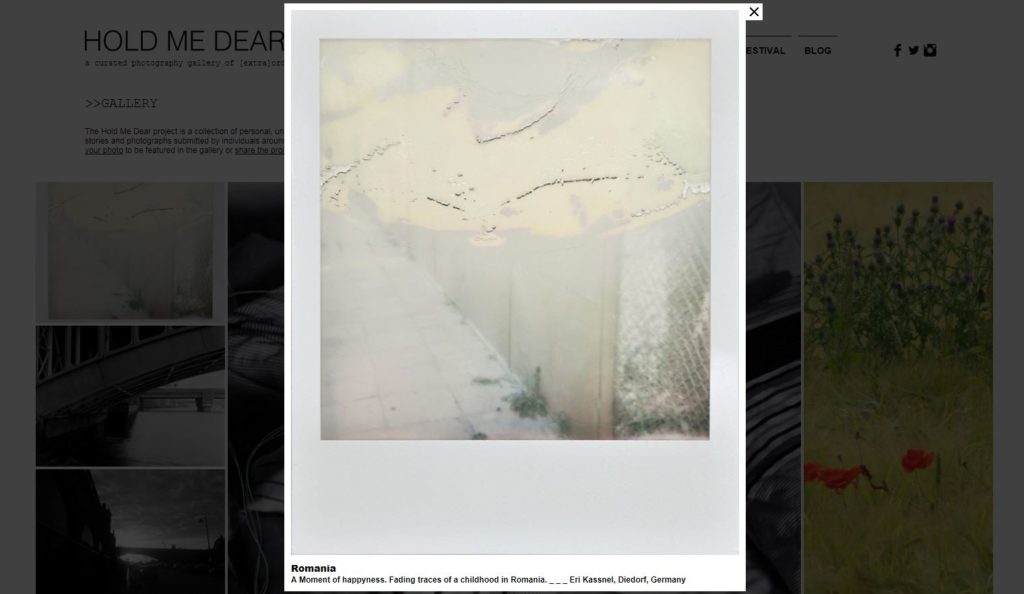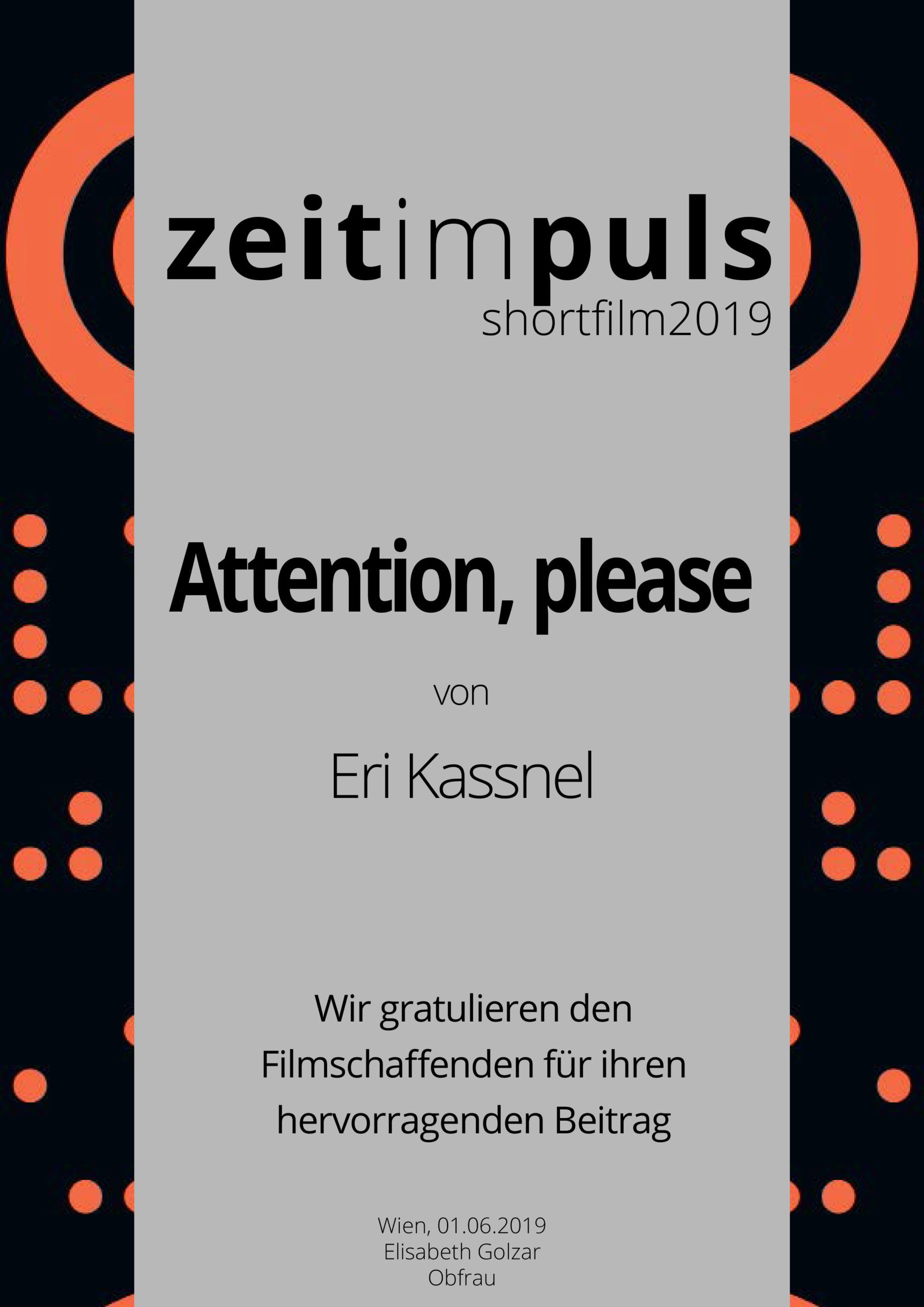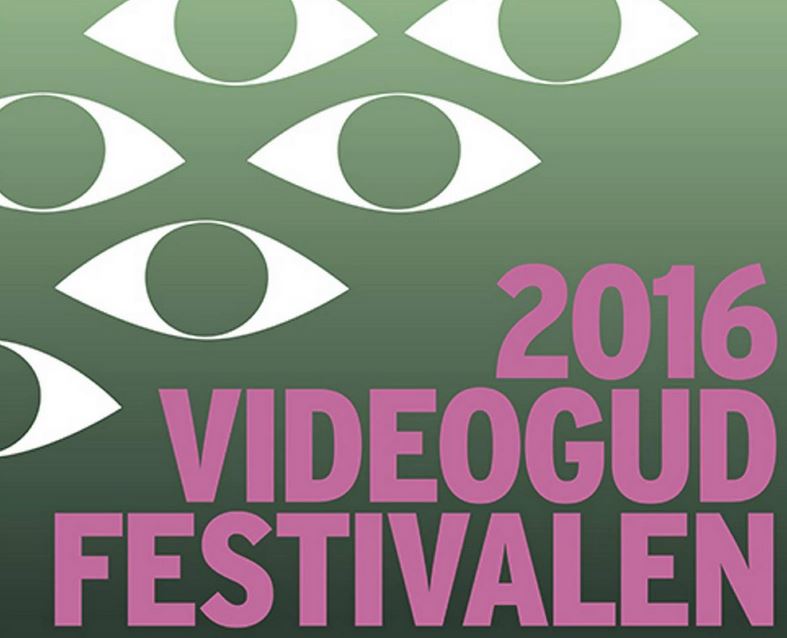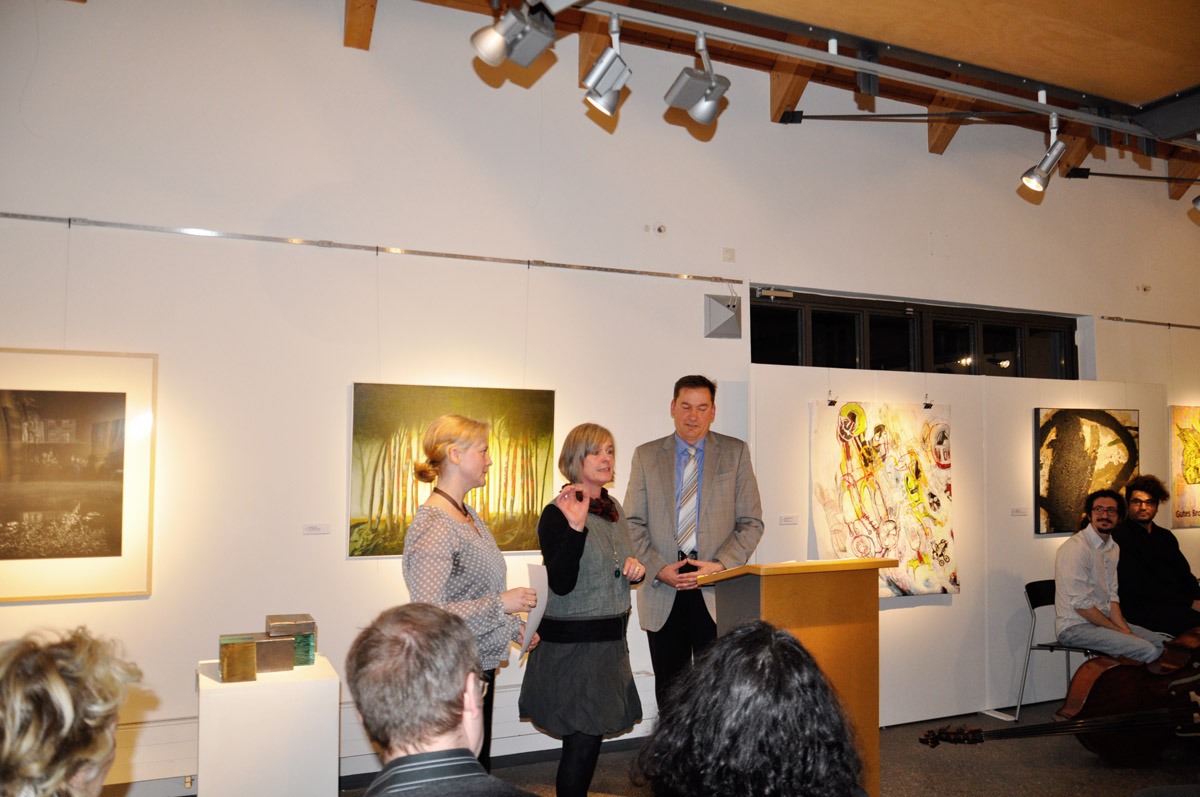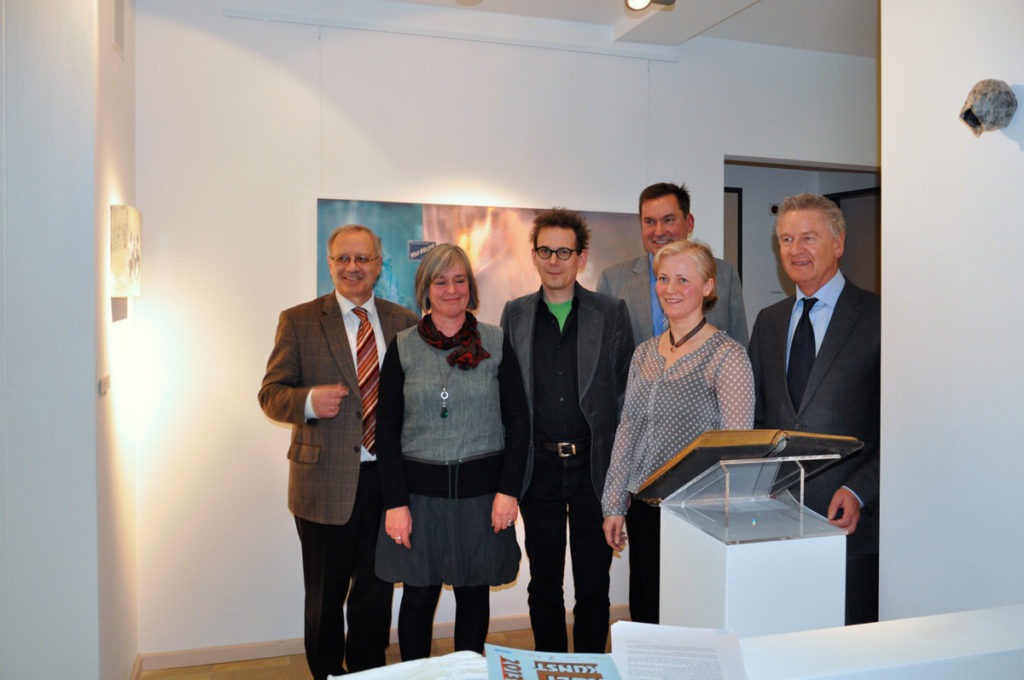“Erika Kassnel-Henneberg’s media are collage, photography and video. The content of her works revolves around her own as well as found memories and their artistic reflection. The focus of her interest is always the human being with his subjective perception and his ability to remember, to forget, to associate and to create consciously or unconsciously his own utopia. In doing so, the artist characterizes forgetting as an ability, not as a deficit. At the same time, she embeds this approach, which is her own, in an expanded, existential questioning. “Today we know that memory is neither true, nor objective, nor complete. We lay traces, collect documents and photographs, and archive them. I see in this an existential doubt: who am I really if I cannot trust my memory and the memory of others? If I leave no traces, did I ever exist?”
Already in her earlier collage works, which are of high aesthetic quality and testify to a sensitive handling of the materials used, the confrontation with her own history is reflected. As viewers, we find in these artistic images assembled from drawing, frottage, various papers, photographs and wax, again and again a fundamental reflection on the nature of memory. This is also evident in the artist’s Polaroids, which represent a concentrated group of works in their own right. Technical observations (e.g. of “noise” as a physical quantity) are reflected here in her own aesthetic designs: “The Polaroid camera makes memory visible. It has a subjective and flawed view of the world. In it, the present rushes and leaves behind a vague view of the past.” We also find this in the experimental video works, which, for all their technical sophistication, sometimes seem almost like moving, faded images from a family album of days gone by. All of this together results in a homogeneous overall artistic design that is convincingly in line with the extremely conscientiously constructed CV in the artist’s application letter.”
Excerpt from the jury’s statement for the 2022 Art Award ceremony 2022/09/26




